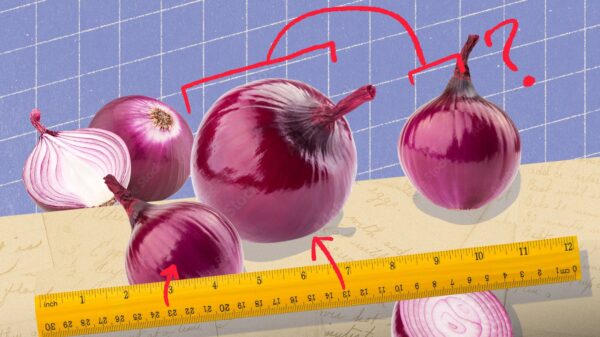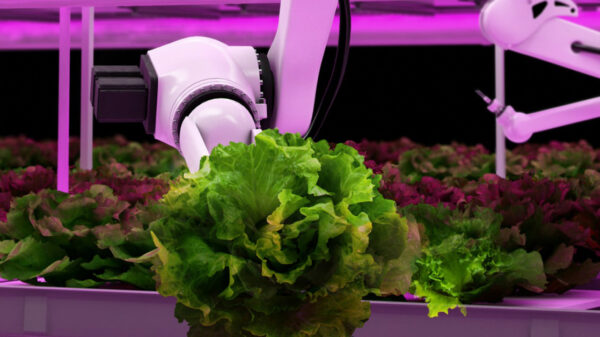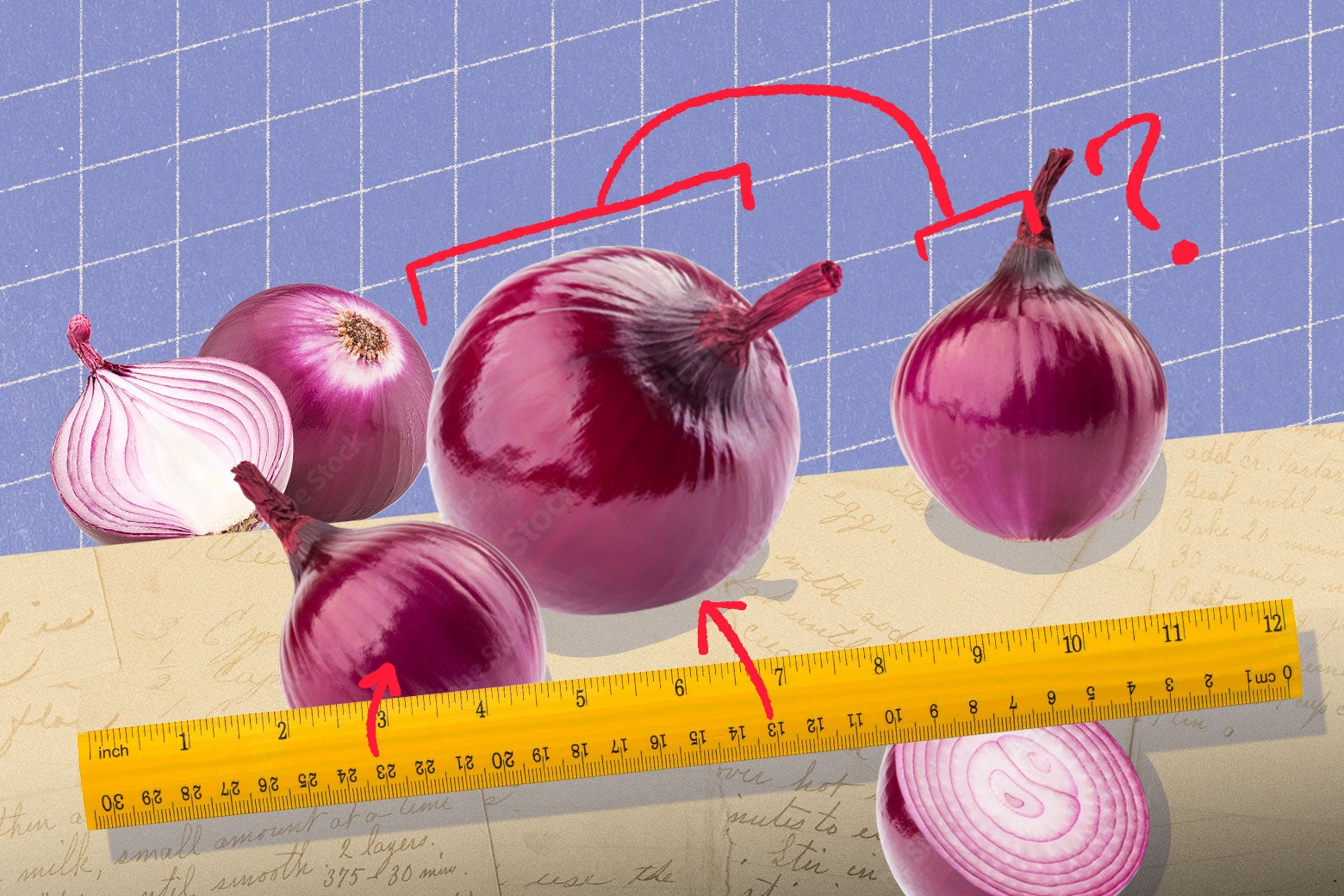UPDATE: A peculiar trend is emerging at grocery stores nationwide—oversized onions are dominating the produce aisles, raising eyebrows among consumers and culinary experts alike. Reports indicate that these onions often weigh in at a staggering 412 grams, significantly larger than the typical 225 to 275 grams for a medium onion.
Concerned readers have taken to platforms like Slate to voice their frustrations, prompting a closer look at what’s happening with these oversized alliums. Just yesterday, a local grocery store was found overflowing with onions resembling “softballs,” as confirmed by culinary sources and firsthand observations.
Grocery store chains seem to be favoring these massive varieties, leaving many home cooks scrambling for recipes that accurately reflect the size and weight of their ingredients. Lan Lam, deputy food editor at America’s Test Kitchen, noted, “The larger chains seem to carry softball-sized Spanish and white onions,” emphasizing the inconsistency shoppers face.
The issue isn’t just about size; it’s about accuracy in recipes. Many cooks are frustrated with vague measurements like “half a medium onion,” which can lead to confusion and inconsistent results. “We always say that one medium onion yields 1 cup of prepared product,” Lam explained, reinforcing the need for clearer guidelines.
At farmers markets, the situation is markedly different. A recent trip revealed a selection of onions that were appropriately sized—true medium onions weighing around 200 grams and smaller ones between 65 and 85 grams. “Farmers market prices vary, but it’s possible to find onions that aren’t overgrown,” said one shopper, highlighting the disparity between grocery chains and local vendors.
The conversation has sparked broader discussions about recipe writing. Experts agree that while size descriptors like “medium” or “large” are convenient for shopping, they often lack precision. Christine Gallary from the Kitchn stated, “We generally start with size because that’s easy to eyeball in the store,” but added that volume measurements can provide more clarity.
As consumers demand accuracy in their cooking endeavors, the culinary community is urged to adapt. “We trust home cooks to make the right call,” Lam remarked, but the need for precise measurements is more pressing than ever. With digital scales becoming commonplace, home cooks expect formulas that eliminate guesswork.
What’s next? As more consumers express their concerns over oversized onions and recipe inaccuracies, grocery chains may need to reevaluate their inventory and suppliers. Expect a surge in conversations around ingredient measurements and recipe clarity in cooking communities.
In a world where precision is increasingly valued, the demand for reliable cooking measurements may reshape how recipes are written and ingredients are labeled. As the debate unfolds, one thing is clear: home cooks are ready for change.
Stay tuned for updates on this developing story, as we continue to explore how the culinary landscape is responding to consumer feedback and evolving kitchen needs.




































































